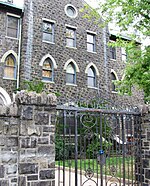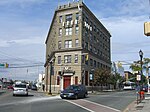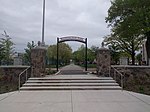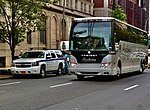West Hoboken, New Jersey
1861 establishments in New Jersey1925 disestablishments in New JerseyFormer municipalities in Hudson County, New JerseyFormer towns in New JerseyNorth Hudson, New Jersey ... and 1 more
Union City, New Jersey
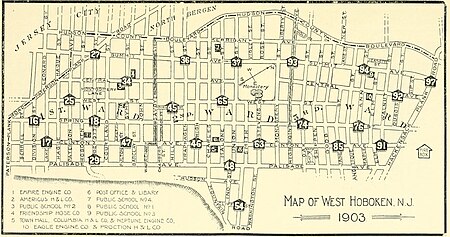
West Hoboken was a municipality that existed in Hudson County, New Jersey, from 1861 to 1925. It merged with Union Hill to form Union City on June 1, 1925. The town is notable for being the first city in which Mallomars were sold.
Excerpt from the Wikipedia article West Hoboken, New Jersey (License: CC BY-SA 3.0, Authors, Images).West Hoboken, New Jersey
Turmstraße,
Geographical coordinates (GPS) Address Nearby Places Show on map
Geographical coordinates (GPS)
| Latitude | Longitude |
|---|---|
| N 40.7613 ° | E -74.0413 ° |
Address
Turmstraße 2
4784
Oberösterreich, Österreich
Open on Google Maps
